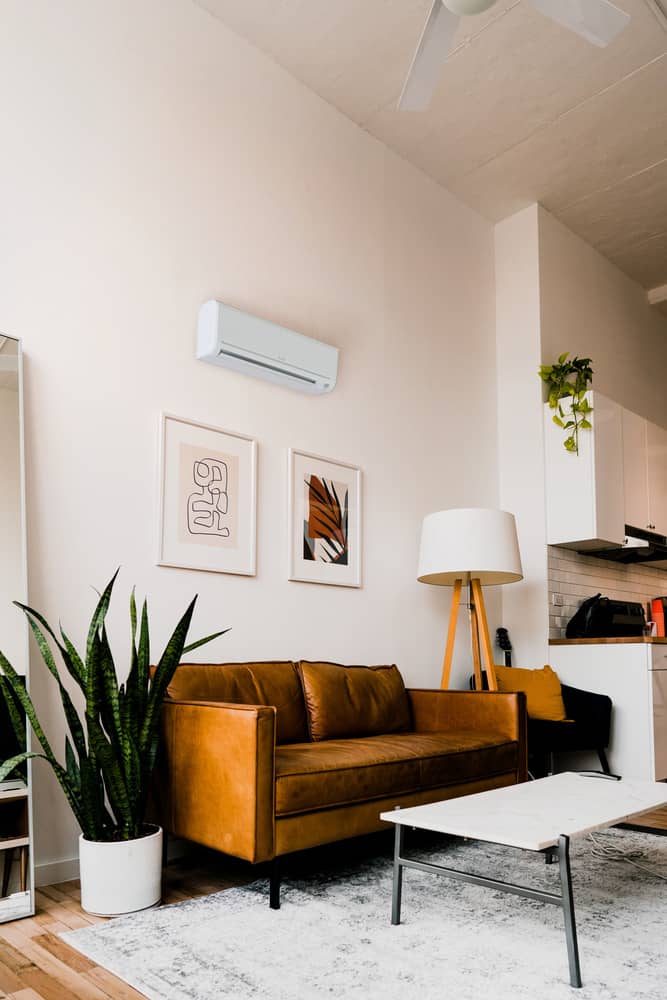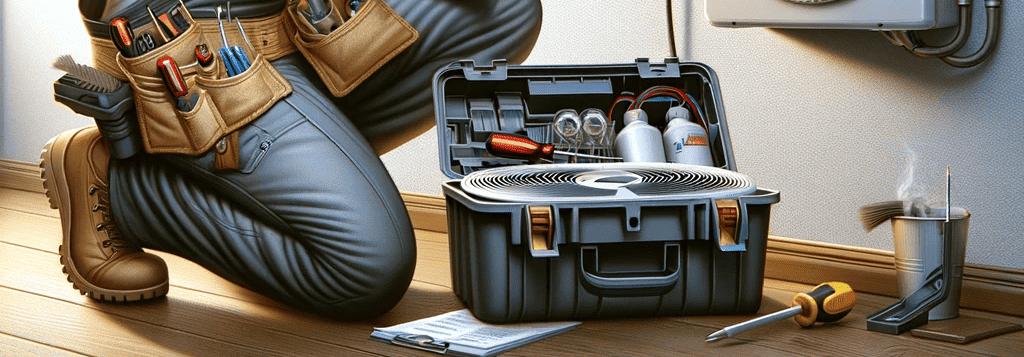Expert Guide to Ductless Mini Split Installation: Air Handler Insights
In the realm of HVAC (Heating, Ventilation, and Air Conditioning), the term "air handler" holds a significant place. It is a crucial component of the ductless mini split system, a popular choice for both residential and commercial heating and cooling needs. This article delves into the intricacies of air handlers in the context of ductless mini split installation, providing a comprehensive understanding of the subject. The ductless mini split system, as the name suggests, is a type of HVAC system that does not require ductwork to distribute conditioned air throughout a building. Instead, it uses an air handler, which is a device designed to circulate and regulate air as part of a heating, ventilating, and air-conditioning system. This article will provide an in-depth look at the role of the air handler in a ductless mini split system, its components, and the process of installing one.

Air Handler: Ductless Mini Split Installation Explained
The air handler is a critical component of any HVAC system. It houses key elements such as the blower, heating and cooling elements, filter racks or chambers, sound attenuators, and dampers.
Understanding the Air Handler
The air handler is a critical component of any HVAC system. It houses key elements such as the blower, heating and cooling elements, filter racks or chambers, sound attenuators, and dampers. Air handlers usually connect to ductwork that distributes the conditioned air through the building and returns it to the AHU (Air Handling Unit). However, in a ductless system, the air handler directly releases the conditioned air into the room. Depending on the specific requirements of a building, air handlers can be configured in different ways. They can be single or multi-zone systems, meaning they can condition the air in one or multiple rooms. The size, power, and efficiency of an air handler can also vary based on the needs of the building it serves.
Components of the Air Handler
The air handler consists of several key components that work together to condition and circulate air. The blower, also known as the fan, is the component that circulates air throughout the system. It can be variable-speed, meaning it can adjust its speed based on the system's needs, or single-speed, meaning it operates at the same speed regardless of the system's needs. Other components include the heating and cooling elements, which condition the air; the filter racks or chambers, which remove dust and other particles from the air; and the sound attenuators, which reduce noise produced by the system. The dampers control the flow of air through the system. Each of these components plays a crucial role in the functioning of the air handler and, by extension, the entire HVAC system.
GET A PERSONALIZE QUOTE FOR YOUR
DUCTLESS MINI SPLIT SYSTEM TODAY!
Mitsubishi award-winning Diamond Contractor
Serving New York and New Jersey

Ductless Mini Split System: An Overview
A ductless mini split system is a type of HVAC system that, as the name suggests, does not rely on ductwork to distribute conditioned air. Instead, it uses individual air handlers installed in each room or zone. These systems are known for their efficiency and flexibility, as they allow for individual temperature control in each room. One of the main components of a ductless mini split system is the outdoor unit, which houses the compressor and condenser. The other main component is the indoor unit, or the air handler, which contains the blower and the evaporator coil. These two units are connected by a conduit, which houses the power cable, refrigerant tubing, suction tubing, and a condensate drain.
Benefits of a Ductless Mini Split System
There are several benefits to installing a ductless mini split system. One of the main advantages is energy efficiency. Because these systems do not rely on ductwork, they avoid the energy losses associated with ductwork of central forced air systems. Duct losses can account for more than 30% of energy consumption, especially if the ducts are in an unconditioned space such as an attic. Another advantage is the flexibility that these systems offer. Each air handler can be controlled independently, allowing for individual temperature control in each room or zone. This can lead to further energy savings, as you can condition only the rooms that are being used. Additionally, these systems are known for their quiet operation and ease of installation.
Installing a Ductless Mini Split System
The installation of a ductless mini split system involves several steps. The first step is to determine the best location for the outdoor unit. This should be a place that is out of direct sunlight and away from areas where snow or ice can accumulate. It should also be easily accessible for maintenance and repairs. The next step is to install the indoor units, or air handlers. These should be placed high on the wall or on the ceiling, away from sources of heat or cold. They should also be easily accessible for cleaning and maintenance. Once the indoor units are installed, the outdoor unit can be connected to the indoor units using the conduit.
Considerations for Installation
There are several considerations to keep in mind when installing a ductless mini split system. One of the main considerations is the size of the system. The size of the system should be based on the size of the room or rooms it will be conditioning. A system that is too small will not be able to adequately cool or heat the room, while a system that is too large will cycle on and off frequently, leading to increased wear and tear and decreased efficiency. Another consideration is the location of the indoor units. They should be placed in a location that allows for even distribution of conditioned air. They should also be easily accessible for cleaning and maintenance. The location of the outdoor unit should also be carefully considered. It should be placed in a location that is out of direct sunlight and away from areas where snow or ice can accumulate.
Maintenance of a Ductless Mini Split System

Maintenance of a Ductless Mini Split System
Regular maintenance is crucial for the efficient operation of a ductless mini split system. This includes cleaning the filters regularly, checking the outdoor unit for debris, and ensuring that the indoor units are not obstructed by furniture or other objects. It's also important to check the refrigerant levels and ensure that there are no leaks. Professional maintenance should also be scheduled at least once a year. During a professional maintenance visit, the technician will check the system for any potential issues, clean and lubricate parts as necessary, and ensure that the system is operating at peak efficiency. Regular maintenance can help to extend the life of the system and prevent costly repairs down the line.
Common Issues and Troubleshooting
Like any HVAC system, ductless mini split systems can experience issues. Some common issues include a lack of cooling or heating, unusual noises, and water leaks. Many of these issues can be resolved with basic troubleshooting. For example, if the system is not cooling or heating properly, it could be due to a dirty filter, a blocked condenser, or low refrigerant levels. If the system is making unusual noises, it could be due to a loose part or a problem with the fan. However, some issues may require professional attention. For example, if the system is leaking water, it could be due to a problem with the condensate drain, which should be addressed by a professional. Similarly, if the system is not operating at all, it could be due to a problem with the power supply, which should also be addressed by a professional.
Conclusion
The air handler plays a crucial role in the operation of a ductless mini split system. Understanding its function, components, and the process of installation can help homeowners and professionals alike ensure that these systems are installed correctly and maintained properly for optimal performance.
While the installation of a ductless mini split system may seem complex, with the right knowledge and tools, it can be a straightforward process. Regular maintenance and prompt attention to any issues can also help to extend the life of the system and ensure that it operates at peak efficiency.
Ready to experience the benefits of a ductless mini split system with the expertise of RIchair Comfort? Since 1994, we've been dedicated to providing top-notch HVAC solutions with a focus on efficiency, comfort, and environmental safety. Let our skilled team handle your installation and maintenance needs, ensuring your system performs at its best. ? Schedule your Reliable Maintenance service today and join our family of satisfied customers.
Back Home - Richair Comfort Solution - Ductless Mini Split Systems Top Quality Installations and Professional Service.
Was This Article Helpful?
RECENT POSTS



